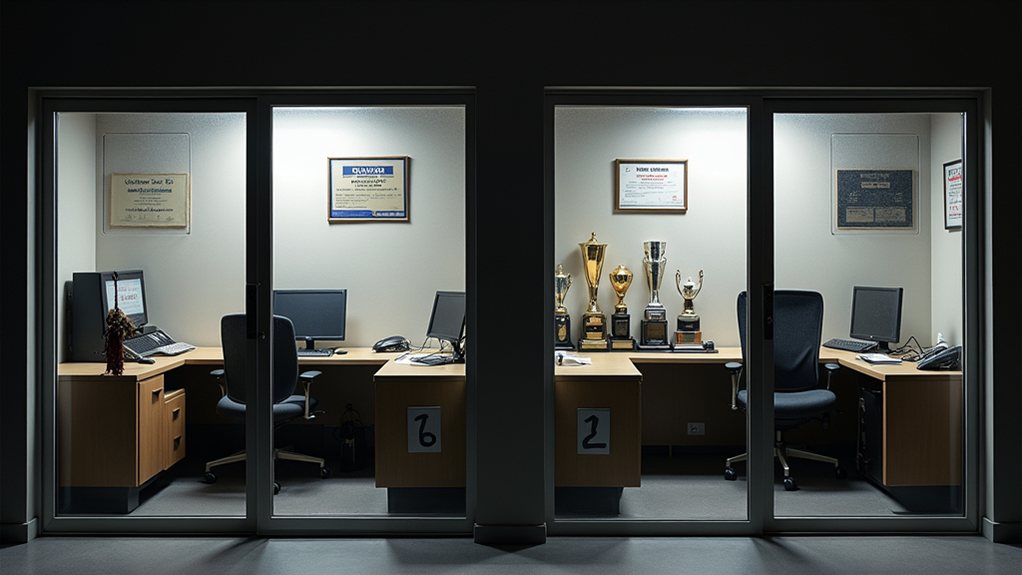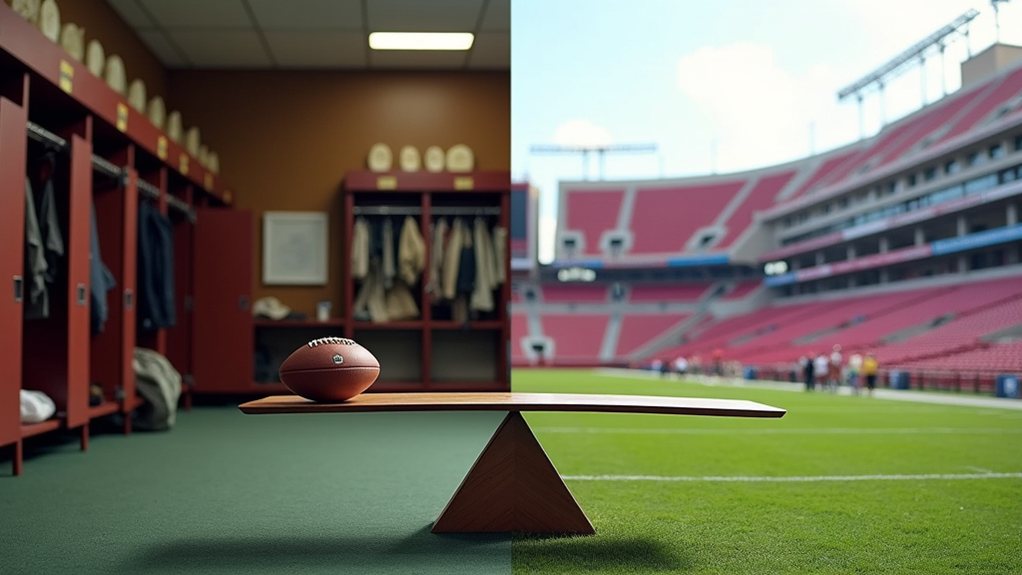Female coaches remain a rarity in top-tier sports despite growing talent pools. The numbers don’t lie – women hold less than 5% of coaching positions across major leagues. Our expert analysis reveals a combination of hiring biases, limited pipelines, and entrenched stereotypes creating significant obstacles. Sports leadership continues to favor familiar faces over diverse candidates. The betting odds strongly favor male coaches securing prime positions for the foreseeable future. Understanding these barriers offers valuable insight for predicting future coaching appointments.
The Paradoxical Impact of Title IX on Women’s Coaching Careers

While Title IX legislation aimed to create equal opportunities for women in sports, its effects on coaching careers have revealed a surprising paradox.
Though female athletic participation skyrocketed after 1972, women’s representation in coaching actually declined over time. Initially, women held over 90% of coaching positions in women’s sports, but as these programs gained funding and prestige, men increasingly secured these jobs. Title IX opened doors for women to become teachers and coaches, but men began applying for these roles as programs developed. Recent research indicates consistent opportunities exist for women coaches in NCAA basketball, but significant racial inequities persist at the Power Five conference level.
Navigating Gender Bias in Sports Leadership Hiring

Despite significant progress in athletic participation, women seeking leadership roles in sports continue to face substantial gender bias in hiring processes.
Male athletic directors, who comprise 89% of Division I leadership, frequently favor candidates who mirror their own characteristics. This homologous reproduction creates a cycle where only 23% of collegiate head coaches are women. The dramatic decline from over 90% of female coaches in women’s sports during the 1970s to approximately 40% today illustrates this troubling trend.
The data doesn’t lie – female coaches encounter both subtle and overt discrimination during hiring.
Many face a “glass ceiling” that limits advancement opportunities despite qualifications.
Without proper mentorship programs and networking connections, women struggle to break into the male-dominated coaching ranks.
Time is running out to address this imbalance!
Limited Pipeline: Barriers to Advancement for Female Coaches

The shortage of women in coaching positions across major league sports reveals a pipeline problem that begins at the youth level.
With only one-third of youth coaches being female, young girls lack visible role models in leadership positions.
The coaching industry’s playing field isn’t level, with networking barriers keeping women on the sidelines.
Our industry experts with fifth-decade experience confirm that systemic challenges create a glass ceiling effect.
Women face the double burden of managing personal responsibilities while maneuvering inflexible coaching schedules.
Don’t miss out on the gold standard analysis of why female coaching talent remains untapped in professional sports.
The Role of Deep-Rooted Societal Stereotypes in Sports Culture
Deep-rooted societal stereotypes continue to hinder female coaches in major league sports at every level.
These outdated perceptions create significant barriers our gold standard research has identified:
- Coaching styles face double standards – men are praised for assertiveness while women face criticism for the same approach.
- Media coverage amplifies bias by focusing on female coaches’ appearance rather than technical expertise.
- The stereotype that men bring more competitive drive persists despite evidence to the contrary.
- Successful female coaches often struggle with likability when demonstrating competence.
Don’t Miss Out on recognizing these barriers!
Understanding stereotypes is the initial step toward creating equal opportunities in the coaching pipeline.
Fan Perceptions vs. Reality: Examining Support for Women in Coaching
Why do sports fans continue to misjudge women’s coaching abilities despite clear evidence showing their effectiveness? The gap between perception and reality remains substantial.
While fans often view female coaches as too emotional or lacking authority, the data shows women face systematic barriers in hiring, not performance.
Less than 3% of men’s college teams have female coaches, creating a self-reinforcing cycle where lack of visibility breeds skepticism.
This perception gap isn’t random—it’s the direct result of media bias, stereotypes, and limited networking opportunities.
Don’t miss out on the gold standard coaching talent being overlooked. The sports world needs to recognize this fifth decade of unfair barriers.
FAQs
How Do Coaching Salaries Differ Between Men and Women?
Coaching salaries differ considerably between genders, with male coaches typically earning more than female coaches due to revenue disparities, market demand, and potential labor-market discrimination in sports programs.
Do Female Coaches Employ Different Leadership Styles Than Male Coaches?
Like rivers flowing differently yet reaching the same sea, research indicates female coaches often adopt cooperative, participatory styles that foster belonging, while male coaches frequently employ more directive, autocratic approaches to leadership.
Which Sports Have Seen the Most Progress for Female Coaches?
MLB shows the most progress for female coaches, with 33 in 2022. NBA has six assistant coaches, while NFL has doubled representation since 2022. MLS still lacks full-time female head coaches.
How Has Media Coverage Influenced Opportunities for Female Coaches?
Media exposure has been less than ideal for female coaches, yet increasing visibility creates career pathways. Coverage that challenges stereotypes empowers women to pursue coaching careers despite persistent institutional barriers to advancement.
What Coaching Certification Programs Specifically Support Women’s Advancement?
Several certification programs support women’s coaching advancement, including Women Empowerment Coaching (1WEC), PWT Academy’s specialized change coaching, and S.W.A.T. Institute’s leveled learning approach for structured career development.









